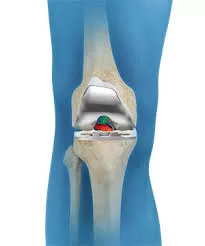Meet Our Doctor

Dr. Romil Rathi
Orthopedic and Joint Replacement Surgeon
Medicure Multispecialty Clinic
- MBBS
- MS (Ortho)
- SICOT International Fellow (IRCCS Polyclinico San Mateo, Italy)
- Academic Visitor (Hospital for Special Surgery , New York)
- Revision Joint Replacement Fellow (Helio Endo Klinic, Germany
Experience : 10 Years
Knee Joint Preservation Surgery In Nagpur
Home / Knee Joint Preservation Surgery In Nagpur

Knee Joint Preservation Surgery
Joint preservation of the knee is an innovative thanks to facilitate relieve joint issues as naturally as doable. There ar several joint preservation procedures accessible to treat common joint issues like hip abnormal condition and early degenerative joint disease, while not requiring full replacement. the proper treatment and surgery to preserve your hip and knee joints is predicated on variety of vital factors, together with your age, gift health, health history, the extent and placement of the injury and your history with alternative medications and coverings.
This procedure preserves the joint by straightening the leg and is additionally referred to as knee realignment. A knee surgery takes pressure off the broken aspect of the knee by dividing the bone, removing a wedge of bone, that realigns the limb that the leg is straight.
Anatomy of the Knee
The knee could be a vulnerable joint that bears an excellent deal of stress from everyday activities, like lifting and kneel, and from high-impact activities, like cardiopulmonary exercise and aerobic exercise.
The knee is created by the subsequent parts:
Tibia. this can be the shin bone or larger bone of the lower leg.
Femur. this can be the leg bone or higher long bone.
Patella. this can be the kneecap.
Each bone finish is roofed with a layer of animal tissue that absorbs shock and protects the knee. Basically, the knee is two long leg bones control along by muscles, ligaments, and tendons. There are two teams of muscles concerned within the knee, together with the quadriceps femoris muscles (located on the front of the thighs), that straighten the legs, and therefore the hamstring muscles (located on the rear of the thighs), that bend the leg at the knee.
Tendons ar robust cords of tissue that connect muscles to bones. Ligaments ar elastic bands of tissue that connect bone to bone. Some ligaments on the knee offer stability and protection of the joints, whereas alternative ligaments limit forward and backward movement of the leg bone (shin bone).
Diagnosis
If you’re having any joint pain in your hip or your knee, it’s vital to hunt medical attention. To diagnose your condition, your doctor can raise you a series of questions on your past and current health and perform a physical communicating. To best confirm the reason for your joint pain and notice the proper treatment, one amongst the subsequent techniques are used:
X-ray (radiograph)—This is often the primary technique utilized in any joint injury. It involves causation radiation through the affected space of the body. The bone then absorbs the radiation and provides doctors with a black and white image which will show any breaks or fractures. this can be perpetually done 1st to work out the health of the bones within the joint.
Computed tomography scan (CT or picture)—A CAT scan combines X-ray technology with technology to come up with a three-dimensional image of the bone and tissues within the space. this will provides a higher image of the matter.
Magnetic resonance imaging (MRI)—This imaging procedure puts you during a vessel. Here, magnetic waves ar moved around you, making vibrations. The resonance from these vibrations is then become a picture, that permits the doctor to envision skeletal structures in addition as blood vessels and tissues.
Arthroscopy—This procedure permits the doctor to form alittle incision and place a camera within the realm of the injury to induce additional detail. this can be sometimes exhausted conjunction with surgery, because it needs anaesthesia.
Surgery
In most cases, joint preservation of the hip and knee needs surgery. The aim of most joint preservation procedures is to repair any bone harm and reconnect any broken bones or torn ligaments that will disrupt the right perform of the joint. Most joint preservations of the hip and knee ar treated surgically through one among the subsequent techniques:
Internal fixation—A procedure that uses metal plates, screws or pins to stabilize displaced bones in order that they will heal properly. In several instances, the plates and rods aren’t surgically removed once the healing method is finished.
Arthroscopy—A procedure within which a scope is inserted through alittle incision to visualize within the black-and-blue space. victimisation this steering, the doctor is ready to filter out or repair broken tissue, permitting the joint to heal properly.
Osteotomy—A procedure to line up the bones by strategically unloading the broken or rheumatic portion of the concerned joint and putting the weight-bearing forces on the conventional joint animal tissue. this enables the joint to endure less stress, thereby reducing the symptoms of abnormalcy or degenerative joint disease.
Resurfacing—Instead of substitution the complete joint, a doctor can use metal caps to resurface the joints within the ball and socket areas. this can be done primarily in hips. it’s been tested effective owing to its ability to scale back stress and friction on the joint muscles, reducing the symptoms of painful joint diseases.
Partial replacement—This is comparable to resurfacing however instead needs implants of a part of the joint space. These implants are tested to be terribly thriving at reducing pain and ar wont to facilitate preserve the uninvolved or traditional components of the joint. This creates a useful joint while not requiring a complete replacement.
